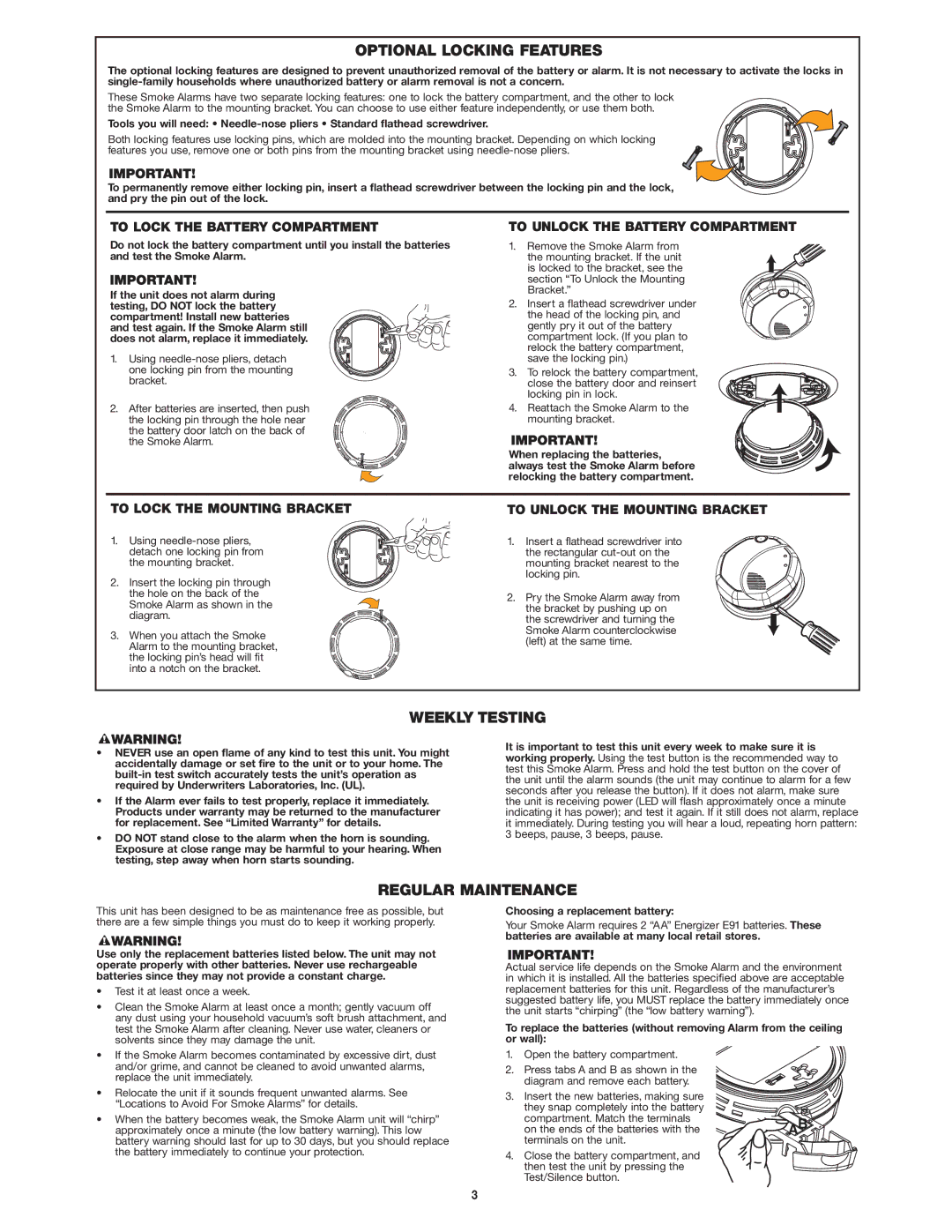SA500 specifications
The First Alert SA500 is a highly reliable combination smoke and carbon monoxide detector designed to provide early warning for both smoke and gas hazards in residential settings. This advanced device incorporates several state-of-the-art technologies and features to ensure the highest level of safety for you and your family.One of the most notable features of the SA500 is its dual-sensor technology. It uses both photoelectric and ionization sensing technologies, which enhances its ability to detect a wide range of fire types, including smoldering fires and fast-flaming fires. This dual approach means that users can enjoy greater peace of mind knowing that they are protected from a variety of potential dangers.
In addition to smoke detection, the SA500 is also equipped with a carbon monoxide (CO) sensor. Carbon monoxide is an odorless and colorless gas that can be extremely dangerous, making the inclusion of CO detection an essential feature for any home's safety system. The detector continuously monitors the air for CO levels and provides an immediate alarm if dangerous concentrations are detected.
Another key characteristic of the First Alert SA500 is its easy-to-read digital display. This feature shows real-time updates on the concentration of carbon monoxide in the environment, making it user-friendly and informative. The display also indicates the status of the smoke detector, ensuring that users can easily tell if the device is functioning correctly.
The SA500 is designed with a long-lasting battery backup, ensuring that it remains operational even during power outages. This is crucial for maintaining safety, as smoke and CO detectors must be functional at all times. The device is easy to install, with a sleek and modern design that blends seamlessly into any home decor.
Furthermore, the SA500 features a voice alarm that announces the type of danger detected, whether it is smoke or carbon monoxide. This distinct feature helps users respond quickly and appropriately in emergencies, differentiating between potential fire hazards and carbon monoxide dangers.
Overall, the First Alert SA500 combines advanced technologies and user-focused features to deliver comprehensive protection against both smoke and carbon monoxide. Its reliability, dual-sensor technology, and informative display make it an essential addition to any home safety plan, ensuring you and your loved ones are well-protected from potential hazards.

